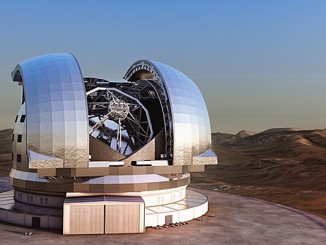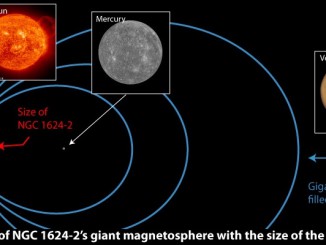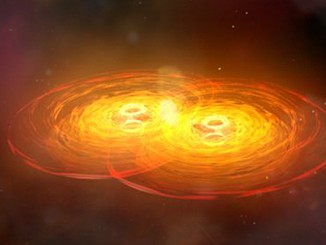
Modest-mass galaxy hosts oversized black hole: an evolutionary missing link?
The central supermassive black hole of a recently discovered galaxy called SAGE0536AGN is far larger than should be possible, according to current theories of galactic evolution. The galaxy was found by accident with NASA’s Spitzer space telescope and is thought to be at least 9 billion years old. Time will tell whether SAGE0536AGN really is an oddball, or simply the first in a new class of galaxies.









